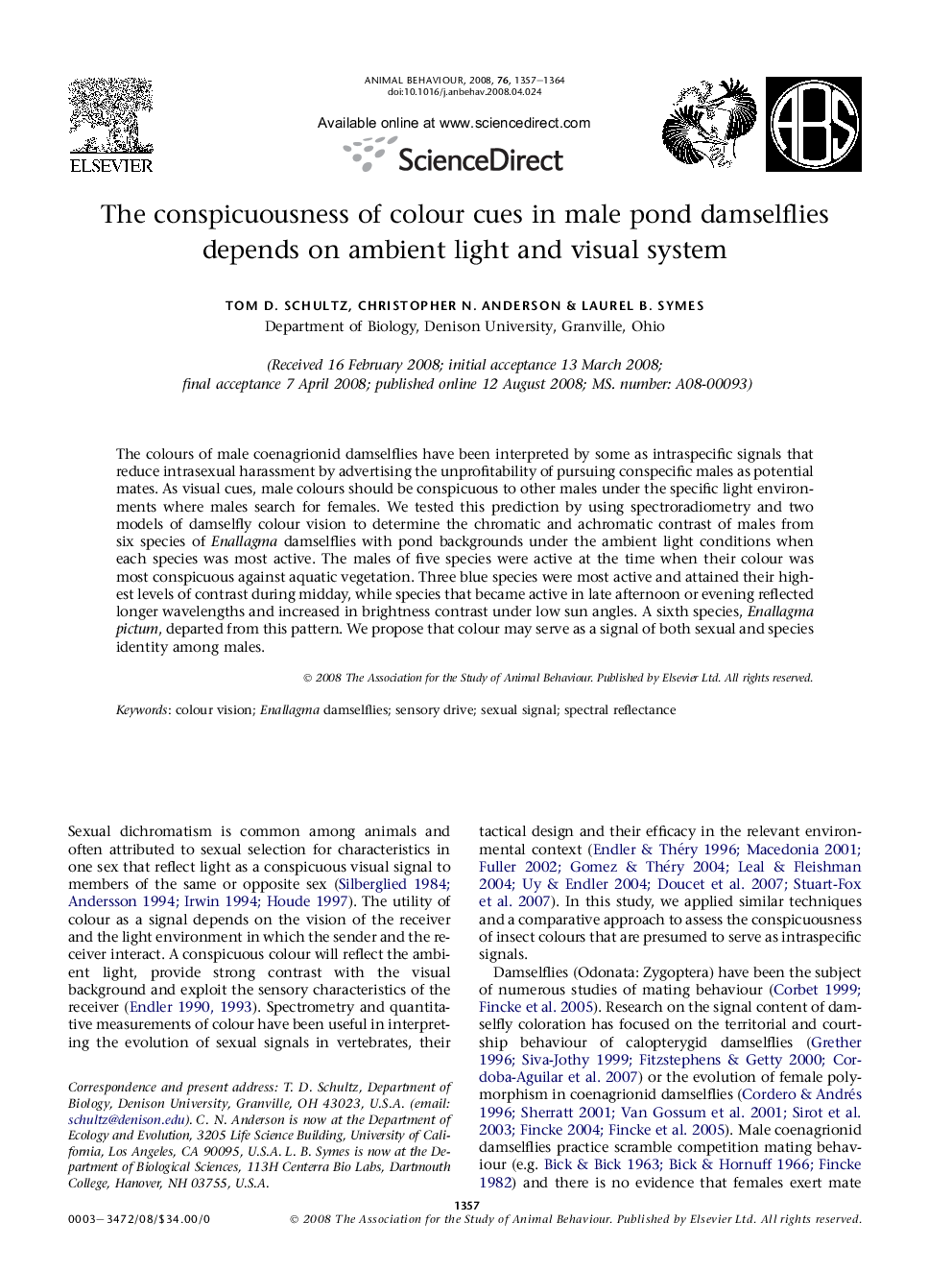| Article ID | Journal | Published Year | Pages | File Type |
|---|---|---|---|---|
| 2418774 | Animal Behaviour | 2008 | 8 Pages |
The colours of male coenagrionid damselflies have been interpreted by some as intraspecific signals that reduce intrasexual harassment by advertising the unprofitability of pursuing conspecific males as potential mates. As visual cues, male colours should be conspicuous to other males under the specific light environments where males search for females. We tested this prediction by using spectroradiometry and two models of damselfly colour vision to determine the chromatic and achromatic contrast of males from six species of Enallagma damselflies with pond backgrounds under the ambient light conditions when each species was most active. The males of five species were active at the time when their colour was most conspicuous against aquatic vegetation. Three blue species were most active and attained their highest levels of contrast during midday, while species that became active in late afternoon or evening reflected longer wavelengths and increased in brightness contrast under low sun angles. A sixth species, Enallagma pictum, departed from this pattern. We propose that colour may serve as a signal of both sexual and species identity among males.
